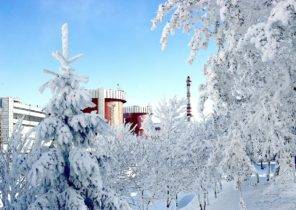
Japanese scientists believe that they were able to determine the chemical element composition of Earth’s core, which researchers are trying to identify for years.
Its share in the chemical composition of the center of the planet element occupies the third place after the Nickel and iron, but scientists still can’t accurately call it.
The experiment researchers from the University Tohoku was conducted under conditions of high temperature and pressure to as closely as possible to simulate the real situation in the center of the Earth. According to its results, scientists concluded that most likely the desired element is silicon.
This discovery may help us to a clearer understanding of how our planet was formed.
“We believe that silicon is an important element in the composition of the core is about 5% of the weight [of the inner core of the Earth] can consist of silicon dissolved in iron-Nickel alloys”, — told in interview Bi-bi-si senior researcher Eiji Otani from Tohoku University.
Out of reach
The Earth’s inner core scientists present as a solid ball with a diameter of about 2400 km.
The core is located too deep under the earth’s surface to explore directly, therefore, to determine its composition scientists study how reflected and refracted passing through the center of the planet of the longitudinal seismic waves.
Scientists were able to determine that approximately 85% of the core consists of iron and 10% Nickel. What are the remaining 5% of the kernel with precision set still failed. In particular scientists thought that it may be carbon or oxygen. The fact that this can be silicon, was also postulated in the past.
To establish the composition of the remaining 5% of the kernel team Eiji Otani mixed iron-Nickel alloy with silicon. Thereafter, the mixture was subjected to high temperature and pressure, thus creating conditions close to the center of the Earth.
As the researchers found, the indexes of distortion waves when passing through the mixture completely consistent with the behavior of seismic waves passing through the planet’s core.
However, according to Ahani, finally, the presence and the proportion of silicon in the core have yet to confirm, but the opening does not negate the presence of nuclei of new elements.
The origin of the nucleus
“Such complex experiments are very important because they can show what was inside the Earth immediately after it formed about four and a half billion years ago”, says research Professor Simon Redfern from Cambridge universitet.
“But other researchers have recently suggested that the composition of the nucleus an important role can play also the oxygen,” adds the scientist.
In particular, said Redfern, this knowledge will help scientists determine how much oxygen is present in the newly formed nucleus.
If, as the research of Japanese scientists, in the core there was a large amount of silicon, it can mean that surrounding the core of the mantle was relatively a lot of oxygen.
However, if in the core you will find the oxygen but not silicon, it would mean that the formation of the planet it flowed from the mantle into the core, which means four and a half billion years ago the oxygen level in the Earth’s mantle was very low.
“These two options are mutually exclusive and are largely determined by the conditions in which began to form the earth’s core,” says Professor Redfern.
“Recent findings add to our understanding, but I suspect that they will not be the last word in this story”, — concluded the Professor.







